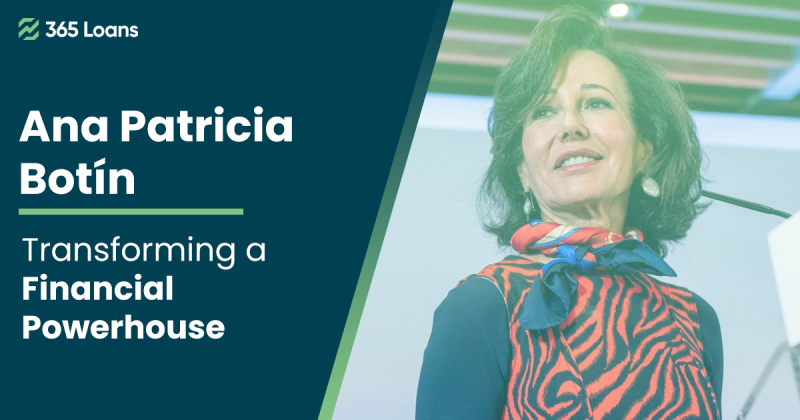Ana Patricia Botín is a name that is synonymous with leadership, innovation, and success in the world of finance. As the current Executive Chair of Banco Santander, one of the world’s largest and most successful banks, Botín has demonstrated exceptional leadership skills, transforming the bank into a true financial powerhouse. She is the first female executive to lead a major bank in Europe, and her achievements serve as a testament to the importance of diversity and inclusivity in the banking industry. In this article, we will explore Ana Patricia Botín’s leadership at Banco Santander, her management style, the transformation of the bank under her leadership, and her legacy in the banking industry.
Background
Ana Patricia Botín is a highly experienced banking executive who began her career in 1988 at JP Morgan in New York. She subsequently worked for the bank in London and Madrid before joining Banco Santander in 1989. She served as the Executive Chair of Banesto, a subsidiary of Banco Santander, from 2002 to 2010, and later became the CEO of Santander UK. Her extensive experience in the banking industry made her well-equipped to tackle the challenges facing Banco Santander and to lead the bank through a period of significant transformation.
Banco Santander is a Spanish multinational bank that was founded in 1857 in Santander, Spain. Over the years, the bank expanded rapidly, both in Spain and globally, through a series of acquisitions and mergers. Despite its global reach, Banco Santander faced several challenges in the early 2000s, including low profitability, high levels of bad debt, and a complex organizational structure that made it difficult to manage effectively. Additionally, the global financial crisis of 2008 had a significant impact on the bank’s performance, resulting in a significant drop in profits and a decline in the bank’s share price.
In 2014, Ana Patricia Botín was appointed as the Executive Chair of Banco Santander, succeeding her father Emilio Botín. Under her leadership, the bank underwent a significant transformation. Botín implemented a number of initiatives to improve profitability, streamline operations, and strengthen the bank’s balance sheet. She also expanded the bank’s global reach, acquiring several new businesses and investing in technology to better meet the needs of customers.
In the following sections, we will take a closer look at Ana Patricia Botín’s leadership style, the transformation of Banco Santander under her leadership, and her legacy in the banking industry.
Leadership Style
Ana Patricia Botín’s leadership style is characterized by her hands-on approach, strategic vision, and focus on building a strong and diverse team. She is known for her ability to lead by example, and she places a strong emphasis on collaboration and teamwork.
Botín’s close involvement in the day-to-day operations of the bank has helped her to develop a deep understanding of the bank’s strengths and weaknesses, enabling her to make informed decisions about how to drive the bank’s growth and success.
Botín’s strategic vision and focus on building a strong and diverse team have also been key factors in the bank’s success. She has implemented initiatives to attract and retain top talent, including a focus on diversity and inclusion. The bank has made significant progress in increasing the representation of women and other underrepresented groups in senior leadership roles.
Ana Patricia Botín’s hands-on approach, strategic vision, and focus on building a strong and diverse team have been key factors in the bank’s success. Her legacy as one of the most successful banking executives of her generation is a testament to the importance of strong and effective leadership in the financial industry.
Transformation of Banco Santander
Under Ana Patricia Botín’s leadership, Banco Santander underwent significant changes and initiatives that have transformed it into a financial powerhouse. Botín initiated strategic changes such as simplifying the bank’s organizational structure, reducing costs, and expanding the bank’s global reach, particularly in Latin America.
Botín also implemented customer-centric initiatives, redefining the bank’s purpose and values to put the customer at the center of everything it does. The bank invested heavily in technology to improve customer experience, launching a mobile app and implementing a digital banking platform that greatly improved the bank’s accessibility and convenience.
Since Botín took over as Executive Chair in 2014, the bank’s profits have increased significantly, and its share price has risen. The bank has seen significant growth in its customer base, particularly in Latin America, and has expanded its business lines to include new products and services.
Botín’s strategic changes and customer-centric initiatives have transformed Banco Santander into a financial powerhouse, resulting in increased profitability, share price growth, and expansion into new markets.
Challenges and Criticisms
Ana Patricia Botín faced challenges during her tenure at Banco Santander, including the bank’s exposure to emerging markets and criticism of its corporate governance practices.
To address these challenges, she implemented a risk management strategy focused on diversification and prudence and made changes to the bank’s corporate governance practices, including increasing the number of independent directors on the board and improving disclosures and reporting practices.
Despite these challenges, Botín’s leadership was largely successful, as her strategic changes and customer-centric initiatives transformed Banco Santander into a financial powerhouse, resulting in increased profitability, share price growth, and expansion into new markets.
Legacy and Future
Ana Patricia Botín’s legacy at Banco Santander is one of transformation, marked by her customer-centric initiatives and strategic changes. She has positioned the bank as a leader in digital banking and expanded its reach into new markets, particularly in Latin America.
Looking to the future, Botín has outlined plans to continue investing in technology and innovation, with a focus on sustainable growth. The bank aims to build on its existing strengths in digital banking and expand its reach in key markets, such as Brazil and Mexico.
Under her leadership, Banco Santander is poised for continued success, with a strong foundation in place for sustainable growth and a commitment to putting customers at the center of everything it does.
We need to stop frowning upon failure whilst criticising those that succeed.
Ana Patricia Botín
Conclusion
In conclusion, Ana Patricia Botín’s leadership at Banco Santander has been marked by strategic changes and customer-centric initiatives that have transformed the bank into a financial powerhouse. Despite challenges and criticisms, she has implemented a risk management strategy, made changes to the bank’s corporate governance practices, and expanded the bank’s reach into new markets.
Her legacy at Banco Santander is one of transformation, with a strong foundation in place for continued success and sustainable growth. Botín’s commitment to innovation, technology, and sustainable growth positions the bank as a leader in the banking industry.
Overall, Ana Patricia Botín’s leadership at Banco Santander is a significant example of successful leadership in the banking industry, demonstrating the importance of innovation, customer-centricity, and a long-term focus on sustainable growth.







